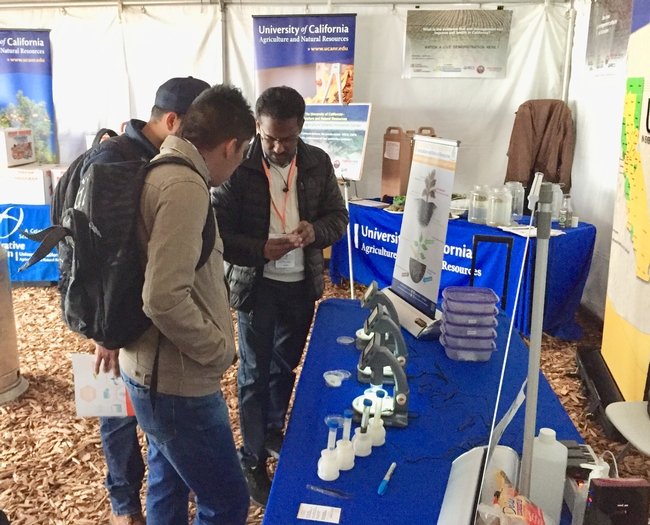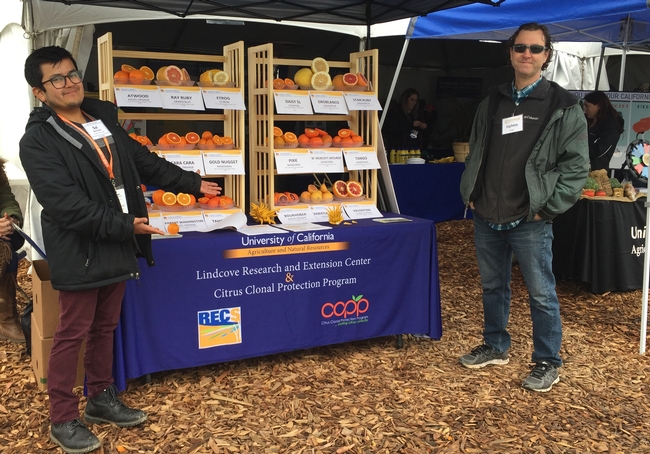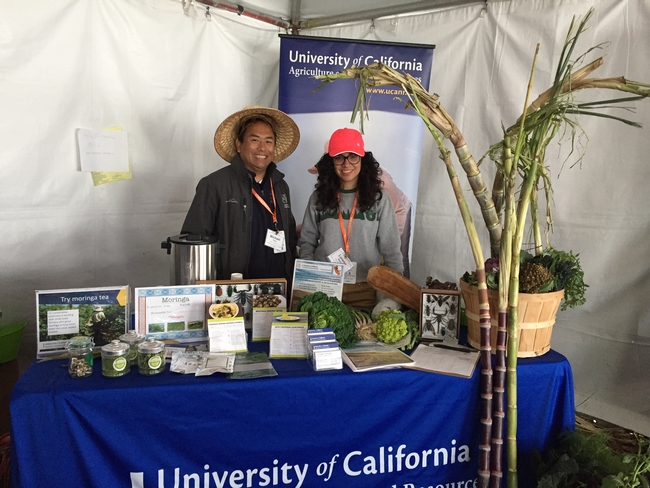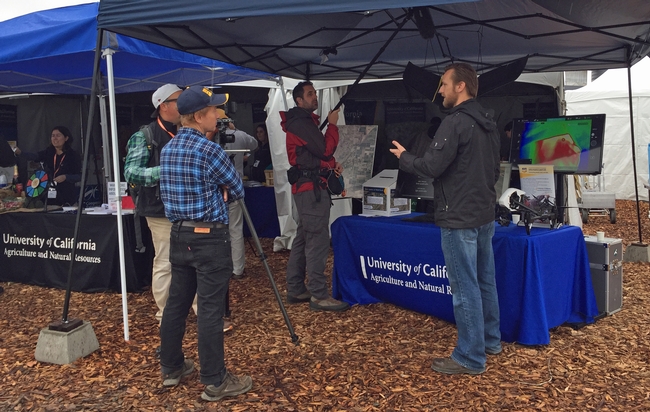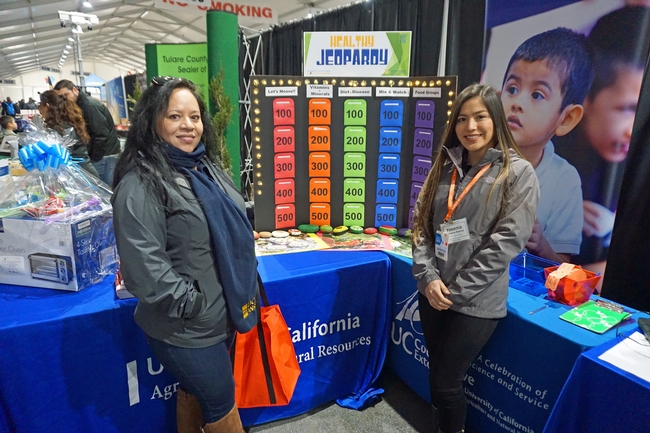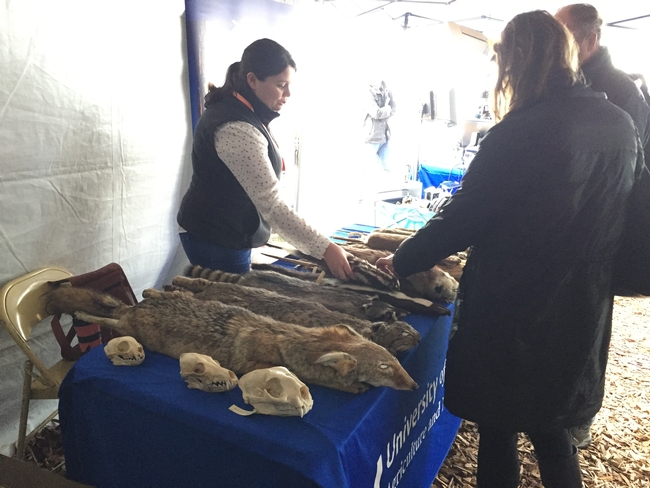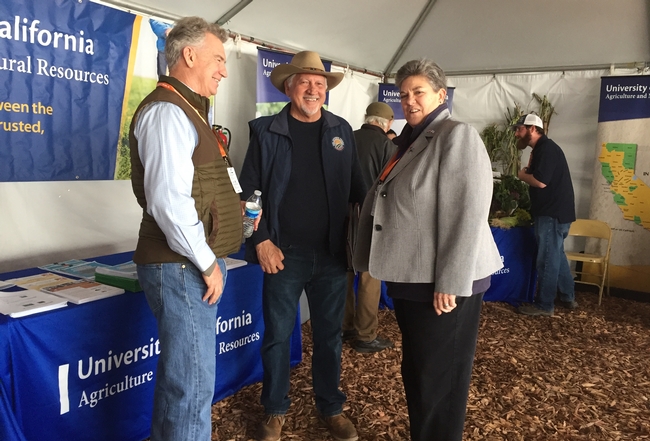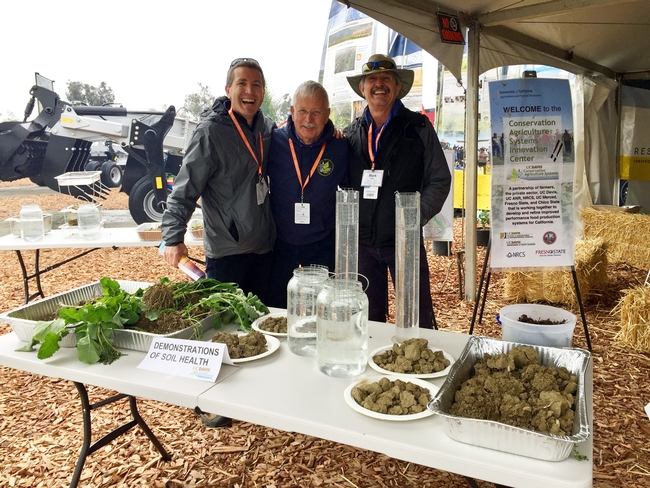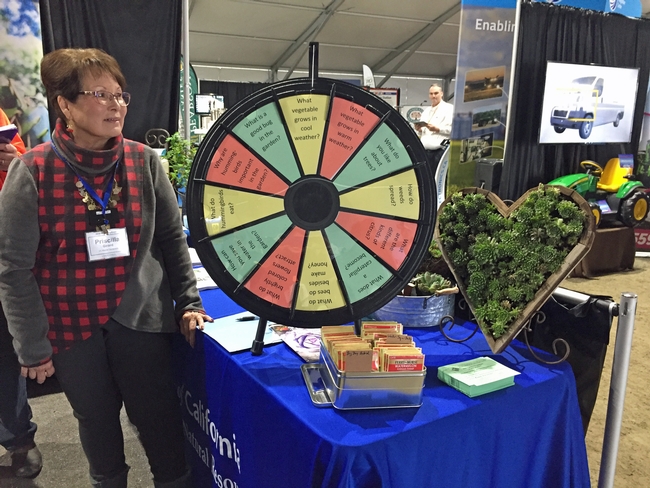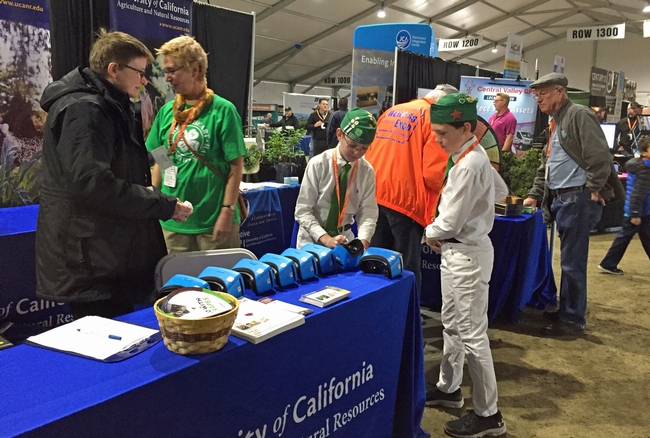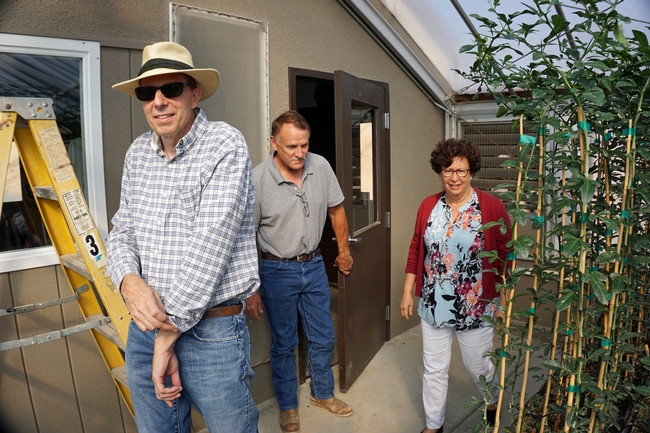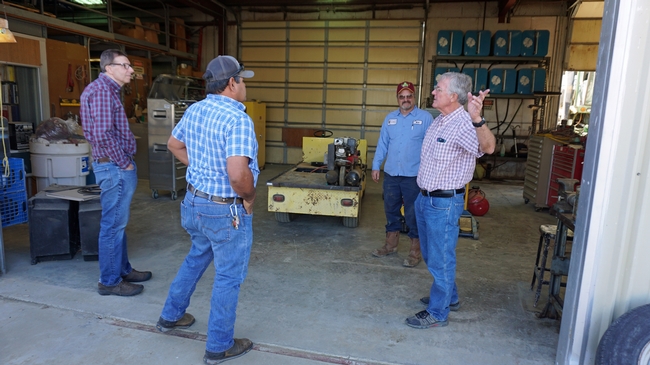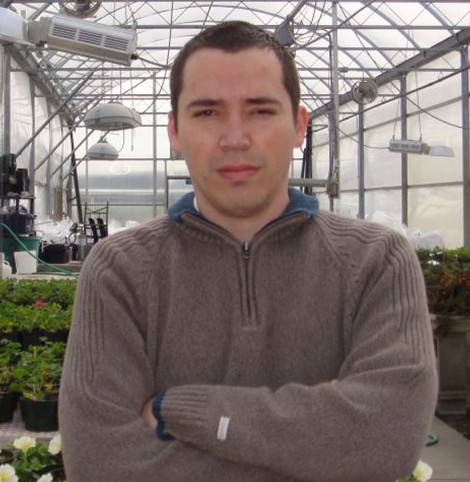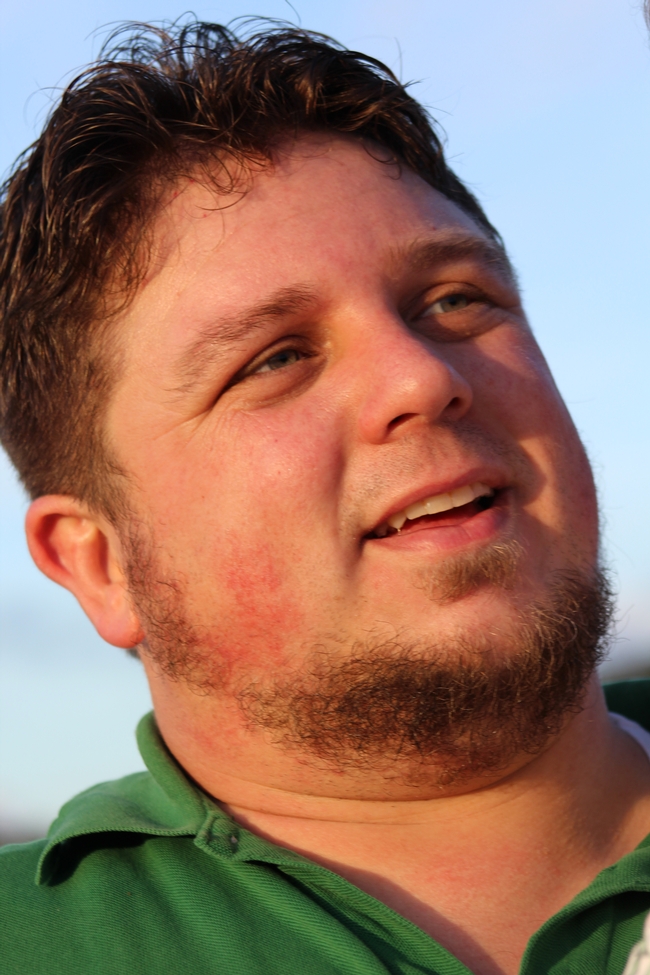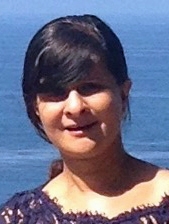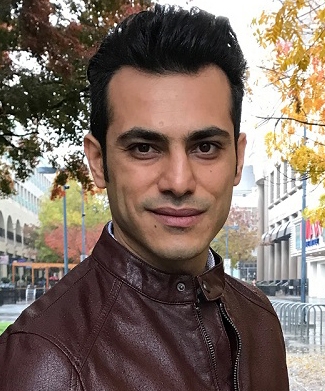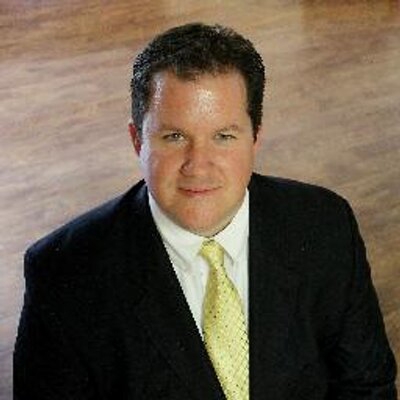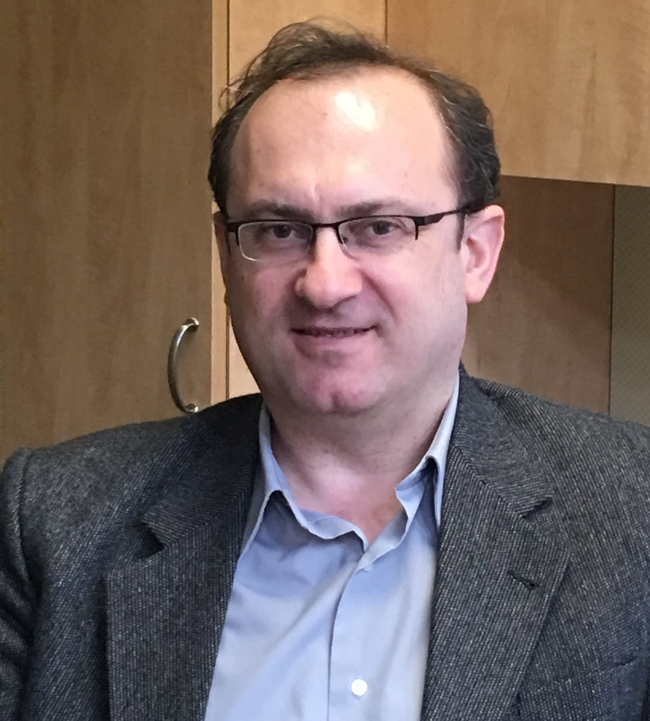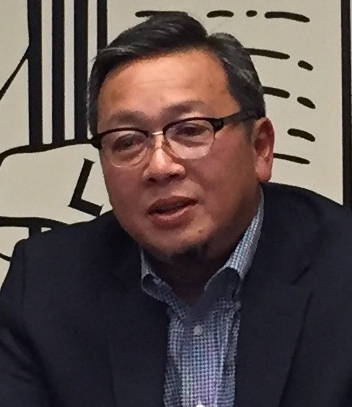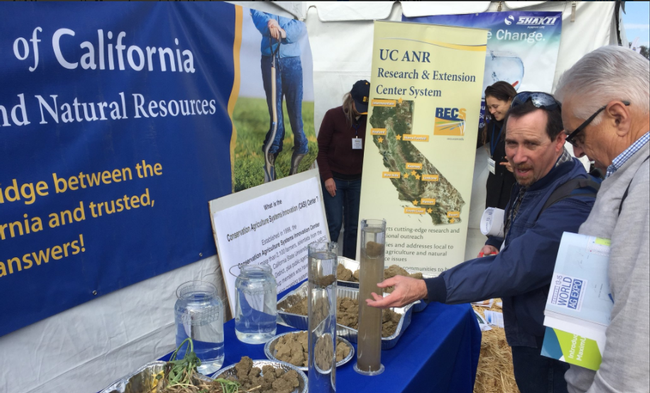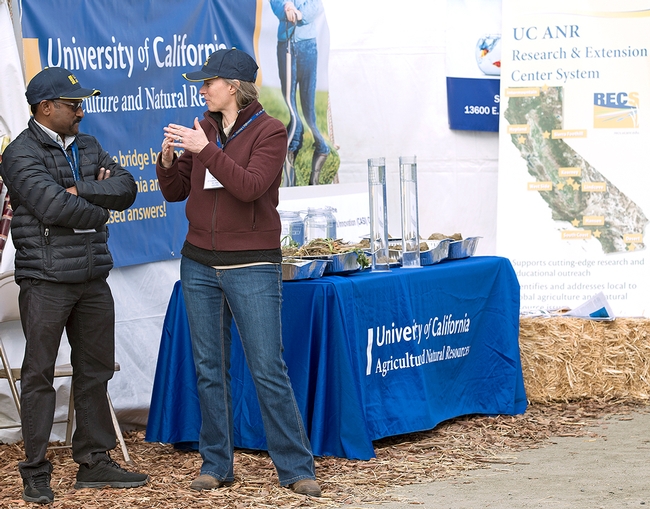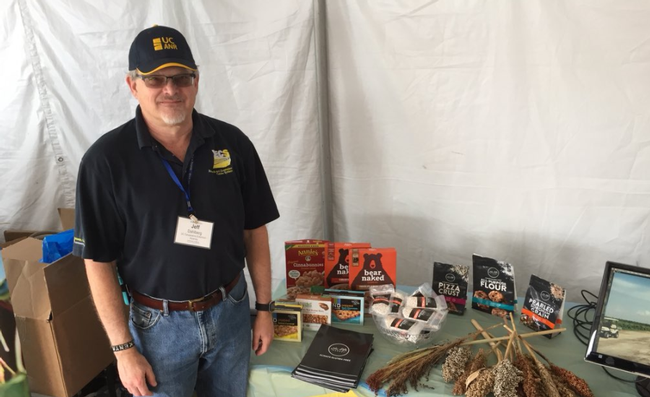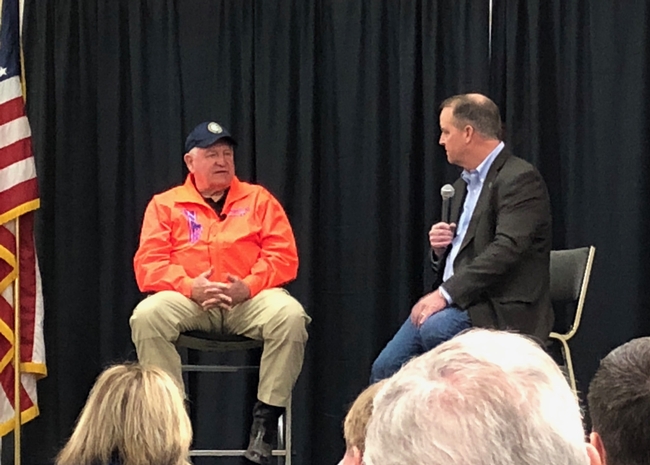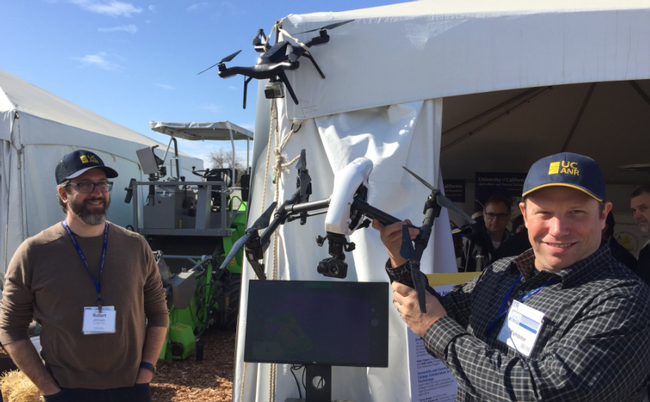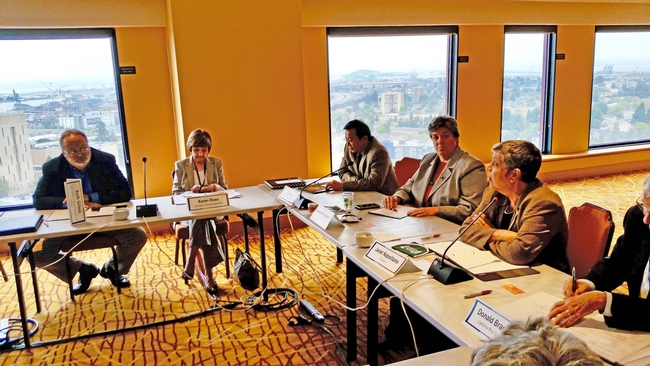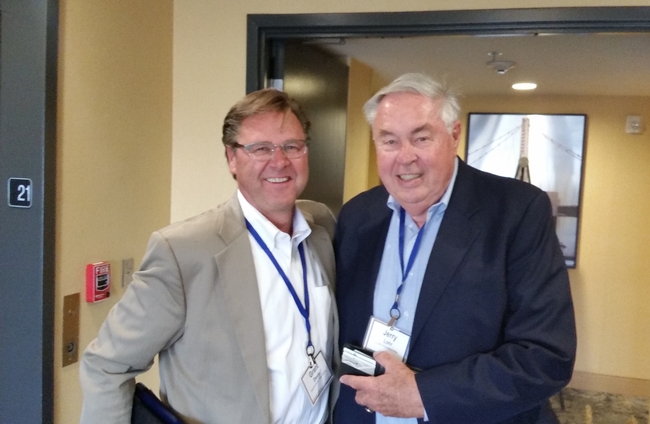Posts Tagged: Jeff Dahlberg
ANR meets the public at World Ag Expo
People from across California and around the world got to taste new crops, see research demonstrations and learn about several UC ANR activities at the World Ag Expo Feb. 12-14. Despite the cold rainy weather, the world's largest agricultural exposition attracted 102,878 people representing 48 states, the District of Columbia and 65 countries to Tulare.
At an outdoor tent, Beth Grafton-Cardwell, UC Cooperative Extension specialist, Greg Douhan, UCCE citrus advisor, and other researchers, handed visitors fresh Tango citrus grown at the Lindcove Research and Extension Center and told them about their citrus variety research.
Ruth Dahlquist-Willard, UCCE small farms advisor, and Michael Yang, small farms and specialty crops agricultural assistant, encouraged visitors to taste moringa tea. Surendra Dara, UCCE entomology and biologicals advisor, described how Bagrada bugs and other pests under the microscopes can be controlled by microbes. Roger Baldwin, UCCE wildlife specialist, and Niamh Quinn, UCCE urban wildlife conflict advisor, took turns showing taxidermy vertebrate pests and describing their management research.
Jeff Mitchell, UCCE specialist, and Jeff Dahlberg, Kearney Agricultural Research and Extension Center director, gave demonstrations to show the superior health of soils managed with conservation techniques.
Demonstrating the use of high-tech in agriculture, Sean Hogan, Informatics and Geographic Information System academic coordinator, Andy Lyons, IGIS program coordinator, and Jacob Flanagan, IGIS programmer, showed how they use drones and cameras in agricultural research.
Inside Pavilion A, Teresa Rios-Spicer, UCCE nutrition program manager, andYeseniaMedrano, UCCE community education specialist, both from Tulare County, challenged visitors to test their nutrition knowledge by playing Jeopardy! Visitors could spin the UC Master Gardeners prize wheel to answer gardening questions and win seeds. 4-H members invited youth to peer into virtual reality goggles to give them an idea about the fun activities that can be part of joining 4-H.
Frank Mitloehner, UC Cooperative Extension specialist, gave a seminar explaining confusion in the media about the amount of greenhouse gas livestock emit in California and globally. He reviewed the innovations in livestock production that are leading the way to a "greener future" for California and U.S. agriculture.
Beth Grafton-Cardwell, UC Cooperative Extension citrus entomology specialist, and Victoria Hornbaker of the California Department of Food and Agriculture, gave an update on regulatory protocols relating to Asian citrus psyllid and HLB quarantines and the proper transportation of bulk citrus to prevent the spread of the pest and disease.
The California and Dutch AgFoodTech innovation partners reunited in Tulare for a networking luncheon to share their action plan with invited guests and scope the projects.
Vice provost Lagrimini visits three Central Valley RECs in October
UC ANR vice provost Mark Lagrimini visited the UC Kearney Agricultural Research and Extension Center, the Lindcove REC and the West Side REC in October as he continues to become familiarized with the diversity of resources in the Division.
After a morning meeting with Kearney director Jeff Dahlberg on Oct. 15, Lagrimini traveled 45 miles southeast to the Lindcove REC. At Lindcove, director Beth Grafton-Cardwell led Lagrimini on a tour of the facility's greenhouse, laboratories, office facilities, the screenhouse, conference facility and research packing line.
The next day, Lagrimini was 70 miles due west to visit the West Side REC, where director Bob Hutmacher showed him research projects at the center in pistachios, cotton and other row crops.
Names in the News
Torres named grape advisor for Tulare and Kings counties
Gabriel Torres joined UCCE on Feb. 1, 2018, as an area viticulture advisor in Tulare and Kings counties.
Prior to joining UCCE, Torres was a postdoctoral researcher in the Department of Nematology at UC Riverside developing an integrated pest management strategy for controlling the most prevalent nematode species in grape vineyards in California. Torres evaluated rootstock resistance, chemical and biological compounds, and anaerobic soil disinfestation methods. Torres conducted most of the nematode experiments under the supervision of UC Cooperative Extension specialist Andreas Westphal.
From 2014 to 2016, Torres was a leader of the plant pathology program for the Colombian Oil Palm Natural Research Centre (CENIPALMA) in Bogota, Colombia. There he developed and guided projects aimed at solving disease problems of the oil palm crop in Colombia, including bud rot, lethal wilt, and basal stem rot.
He completed a Ph.D. in plant pathology from Michigan State University and a B.Sc. in agronomy from Universidad de Caldas, Manizales, Caldas, Colombia.
Torres is based in Tulare and can be reached at (559) 684-3316 and gabtorres@ucanr.edu.
Lund named grape advisor for Madera, Merced and Mariposa counties
Karl Lund joined UCCE on Jan. 8, 2018, as an area viticulture advisor in Madera, Merced and Mariposa counties.
Prior to joining UCCE, Lund was a trial specialist at Syngenta Flower, where he designed and conducted floriculture research trials under both greenhouse and garden conditions for a wide variety of flowering plants, specifically focused on the development of fertilization recommendations and nutrient profiles. In 2016, Lund was a technology development representative at Monsanto, where he worked with seed distributors and local farmers to plant, maintain and evaluate pre-commercial varieties of lettuce, bell peppers and spinach.
Lund spent many years teaching and conducting research in viticulture. Starting in 2008, he worked in the laboratory of Andy Walker at UC Davis, where he ran a project looking at the phenotypic and genetic diversity of phylloxera in Northern California, and trying to understand the genetics of phylloxera resistance in hopes of breeding new phylloxera resistance rootstocks for California. His research helped identify new feeding types of phylloxera in Northern California and connected those feeding types to genetic groups. He also identified new sources of broad phylloxera resistance to be used in breeding phylloxera-resistant rootstocks.
As a postdoc in the Walker lab, Lund looked at drought avoidance in grapevine rootstocks. Insights from this work may be useful in the creation of more drought-tolerant rootstocks. In addition to his research, he was a teaching assistant for several UC Davis classes. Lund wrote a book chapter on grapevine breeding in the western United States and lectured at Cal Poly SLO for the 2015-2016 academic year.
Lund completed a B.S. and a Ph.D. in genetics at UC Davis.
Based in Madera, Lund can be reached at (559) 675-7879, ext. 7205 and ktlund@ucanr.edu.
Kansal joins CSIT as portfolio and project manager
Namita Kansal recently joined the Communication Services and Information Technology as a portfolio and project manager.
Some of the projects she is working on include assessing the network status of all UCCE sites in California to inform strategic decisions to fund and prioritize the UCCE sites that urgently need network upgrades, portfolio-level reports to inform strategic, operational and funding decisions for the Web IT team, a change management process for the entire IT team, and a project plan and funding estimates for the ANR website redesign.
Before joining ANR, Kansal was a project manager at the UC Davis School of Medicine, working to operationalize strategic initiatives, program development and project management.
She earned a masters in public administration and a master in arts from Syracuse University.
Kansal is based at the ANR building in Davis and can be reached at (530) 750-1207 and namkansal@ucanr.edu.
Pourreza wins ASABE Sunkist Young Designer Award
The American Society of Agricultural and Biological Engineers has selected Ali Pourreza, UC Cooperative Extension specialist in the Department of Biological and Agricultural Engineering at UC Davis, to receive the Sunkist Young Designer Award.
This award recognizes and honors ASABE members under 40 years of age for outstanding contributions to the advancement of the agricultural engineering profession and to stimulate professional achievement.
Sponsored by Sunkist Growers, Inc., the Young Designer Award recognizes the development of a technical plan that influences agricultural engineering progress, as evidenced by use in the field.
Pourreza developed a polarized imaging technique to detect accumulation of starch in citrus leaves as an early indication of citrus greening disease or huanglongbing (HLB).
“The polarized imaging technique was primarily used for early citrus greening detection, that is a major disease of citrus with no known cure,” said Pourreza. “Early detection of citrus greening is important because growers can prevent further spread of the disease before the entire orchard gets infected. The polarized imaging technique can also be used in other applications that involve the detection of starch or sugar.”
He also developed the Virtual Orchard, which uses aerial imagery and photogrammetry to create a 3-D image of an orchard.
“Knowledge about tree geometry such as individual canopy cover, volume, height and density is important for growers to understand variability within their orchard and make timely decisions about irrigation, nutrient, pest and disease, etc.,” Pourreza said. ”Virtual Orchard is an affordable technology that makes this information accessible for growers. Information extracted from the Virtual Orchard can be used to apply variable rate inputs in a site-specific manner according to the prescription maps that identify the application rate at different locations of an orchard.”
The award will be presented to Pourreza during the ASABE annual meeting in July in Detroit.
UC ANR receives award for extending high-speed broadband
The nonprofit organization CENIC has awardedUC ANR its 2018 Innovations in Networking Award for Broadband Applications. The award recognizes work to extend high-speed broadband to University of California researchers in rural communities across California by connecting UC ANR sites to the California Research and Education Network (CalREN),
Gabe Youtsey, chief innovation officer; Tolgay Kizilelma, chief information security officer; and Tu Tran, associate vice president for business operations, were recognized as project leaders.
In 2016, CENIC began working with UC ANR to connect its nine research and extension centers to CalREN, equipping them with internet speeds comparable to those found on UC campuses. For example, the UC Hopland Research and Extension Center in Mendocino County and the UC Desert Research and Extension Center in Imperial County are both connected at 500 Mbps, five times their previous level of connectivity.
“You can't do big data with dial-up internet speed,” said Jeffery Dahlberg, director of the UC Kearney Research and Extension Center. “Before this upgrade, our internet was slower than my home internet speeds. Now we have speeds more like you will find on UC campuses.”
Due to the remote location of most of these facilities, the work involved in identifying suitable pathways for connections between each site and the CalREN network has been extensive. Engineers from CENIC and UC ANR collaborated on network design, deployment, and troubleshooting to equip these facilities with the high-speed internet they need.
In addition to the RECs, Highlander Hall, home to News and Information Outreach in Spanish and the Citrus Clonal Protection Program, is now connected to CalREN. Elkus Ranch (the environmental education center for Bay Area youths), the UC ANR building in Davis and 30 UC Cooperative Extension sites are in the process of being connected.
UC ANR researchers and staff engage farmers, other stakeholders at World Ag Expo 2018
UC ANR had a major presence at World Ag Expo Feb. 13-15 in Tulare. In addition to exhibits inside the Pavilion, this year, UC ANR hosted a series of well-attended researcher demonstrations of citrus varieties, soil quality and other subjects in a tent outside. UC ANR scientists also gave presentations on “hot topics” ranging from the use of drones and other electronic technology in production agriculture to animal health to human nutrition.
“Between our tent and our Pavilion space, there's been a lot of very good engagement and discussions with the primary stakeholder audience,” said Mike Janes, Strategic Communications director.
On the opening day of the expo, USDA Secretary Sonny Perdue held a town hall to hear from members of California's agriculture industry concerns about the upcoming Farm Bill. VP Glenda Humiston was among those present for the discussion, which attracted considerable media attention.
Western Farm Press wrote: “While trade, labor and regulatory issues may top the list of agricultural policy issues Perdue faces in Washington D.C., Glenda Humiston, Vice President of the University of California Agriculture and Natural Resources Division of the state's Land Grant university, stressed the importance of adequate research funding and federal definitions of rural versus urban, which she said is having detrimental impacts across California on important program funding.”
“If a county has one town that has 50,000 population in it, the entire county is labeled metropolitan for purposes of allocating funding,” Humiston said in the Hanford Sentinel.
“Humiston said that while UCANR has a ‘proud tradition of research in California,' the university is plagued by reduced budgets at the same time the state is plagued by a new invasive pest every several weeks. She said for the university to stay ahead of these issues and to help growers in these and many other areas, additional funding is vital,” Farm Press reporter Todd Fitchette wrote.
In private communication, Fitchette said that widespread applause broke out from the audience in response to Humiston's comments.
PAC discusses strategic plan and urban agriculture
Downtown Oakland was the site of the biannual UC President's Advisory Commission on Agriculture and Natural Resources (PAC) meeting on Aug. 9, which included a Q&A session with President Napolitano, program presentations from UC Cooperative Extension county directors Rob Bennaton and Igor Lacan, and updates from deans Helene Dillard (UC Davis), Keith Gilless (UC Berkeley) and Kathryn Uhrich (UC Riverside), as well as Executive Associate Dean John Pascoe (filling in for Dean Michael Lairmore, UC Davis School of Veterinary Medicine).
In her opening remarks, UC ANR Vice President Glenda Humiston introduced Mark Bell, the division's new vice provost for statewide programs and strategic initiatives. Bell spoke about the strength of the UC system, the diversity of programs offered by UC ANR statewide, and his plans to leverage the strong volunteer and staff base of programs like UC Master Gardeners and 4-H.
Humiston also offered updates on the division's strategic plan and the significant progress made in implementing its key goals. Associate Vice President Tu Tran then gave a presentation on the division's financial situation, which he titled “A Fiscal Plan for Success.” Tran addressed UC ANR's place in the state budget and its revenue projections through FY 2021-22, which includes significant growth in major gifts and fundraising.
Bennaton and Lacan both gave spirited and enthusiastic presentations that were received well. Bennaton, who serves as county director for Alameda and Contra Costa counties as well as UCCE urban agriculture advisor for the Bay Area, discussed the benefits of urban agriculture and the assortment of activities going on in community development, habitat restoration and youth programming.
Lacan, also a UCCE environmental horticulture advisor for the Bay Area and co-director in San Mateo and San Francisco counties, talked about the diverse and richly rewarding work he spearheads in urban forestry. His work currently focuses on sustainable management of urban trees and urban water.
During a Q&A period, the president engaged PAC members on various issues such as potential public-private partnerships that could involve UC ANR, targeted approaches to advocacy and deferred maintenance needs for UC writ large but also for UC ANR and its research and extension centers system, specifically.
The deans gave updates on research and activities occurring at their respective colleges and school.
The next PAC meeting is scheduled for December, also in Oakland.

